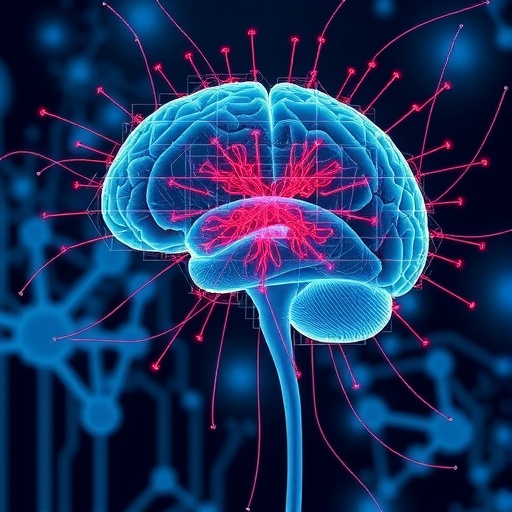In a groundbreaking advance that pushes the frontiers of cognitive neuroscience, a recent study has unveiled a complex neural cascade underlying creative ideation, utilizing event-related potentials (ERP) to decode the temporal architecture of how our brains generate novel ideas. Published in BMC Psychology, this research by Yang, Ma, Su, and colleagues meticulously maps the intricate brain dynamics that propel creativity, offering scientists an unprecedented window into the elusive process of human innovation.
Creative ideation—the ability to produce novel and valuable ideas—is a cognitive marvel that has long fascinated researchers. Yet, the neural substrates orchestrating this phenomenon remain only partially understood. Capitalizing on the high temporal resolution of ERP, the researchers synchronized electrophysiological signals with moments of creative thought, allowing them to capture the brain’s rapid-fire activity sequences. This approach is a critical departure from traditional imaging methods that often fail to capture the fleeting neurophysiological cascades driving creativity.
The study employed a rigorously designed experimental paradigm wherein participants engaged in divergent thinking tasks, widely regarded as a proxy for creative idea generation. While individuals generated solutions to open-ended problems, their brain activity was continuously recorded through scalp electrodes. The resulting ERP components were analyzed to identify distinct processing stages involved in ideation. This meticulous temporal dissection illuminated a cascade beginning with early sensory and attentional mechanisms, extending to advanced integrative and evaluative processes.
Crucially, the authors documented a progression of ERP signatures, starting with the P1 and N1 components that reflect enhanced perceptual processing during creative tasks. These early components suggest that creative thinking is not a passive or purely top-down process but actively engages sensory gating and selective attention. Such findings imply that creativity hinges on the brain’s ability to finely tune its incoming information streams, filtering relevant stimuli to sow seeds of innovation.
As the cascade unfolds, mid-latency components such as the P2 and N2 were observed to strongly modulate during moments of insight and idea generation. These components are typically linked to cognitive control and conflict monitoring, implying that creativity involves dynamically balancing spontaneous thought with executive regulation. This balancing act underscores the importance of cognitive flexibility in navigating the semantic networks that feed novel ideation.
The study also highlights the role of the late positive potential (LPP), a marker usually associated with emotional salience and motivational relevance, exhibiting elevated amplitudes as ideas crystallize into coherent concepts. This suggests that affective valuation is integral to creative processes, shaping which ideas endure and evolve, emphasizing that creativity emerges not only from cold cognition but also emotional engagement.
Perhaps most strikingly, the research delineates how these multiple ERP components do not operate in isolation but cascade sequentially, forming a highly coordinated neural choreography. This cascading architecture reveals a temporal hierarchy where early sensory engagement sets the stage for later evaluative and conclusive stages. Such insights shift the narrative of creativity from a nebulous spark to a structured process orchestrated by precise timing within neural circuits.
The ramifications of delineating this cascading ERP architecture are profound, offering potential pathways to enhance creativity through targeted neurofeedback or brain stimulation. By understanding the precise time windows critical for different creative stages, interventions could be designed to amplify beneficial neural patterns, potentially accelerating innovation in educational and professional domains.
Moreover, the findings pave the way for further exploration into clinical populations where creative cognition is impaired, such as in autism spectrum disorders or depression. By pinpointing which ERP components diverge from normative patterns in these groups, personalized therapeutic strategies might be developed to restore or compensate for creative processing deficits.
Beyond its immediate scientific value, this work opens intriguing philosophical questions about the nature of creativity itself. It prompts reconsideration of models that emphasize either spontaneous inspiration or deliberate problem-solving as the primary driver. Instead, creativity appears as an emergent property of a temporal cascade blending perception, cognition, and emotion—an orchestration rather than a singular event.
The interdisciplinary methodology integrating psychology, neuroscience, and electrophysiology also exemplifies the evolving landscape of creativity research. By harnessing tools that capture brain activity with millisecond precision, the study bridges the gap from abstract cognitive concepts to tangible neural mechanisms, enhancing reproducibility and empirical grounding in the field.
The study’s robust sample size and state-of-the-art ERP analysis techniques further cement the reliability of its conclusions. Advanced signal processing and source localization enriched interpretability by linking scalp-recorded potentials to underlying cortical regions involved in creativity, such as prefrontal and parietal networks.
These neural insights dovetail with emerging computational models that simulate creative cognition, providing biological validation for theoretical frameworks positing creativity as a multi-stage constructive process. The temporal precision achieved with ERP stands as an invaluable complement to spatially detailed but temporally coarse functional MRI studies, allowing a more granular decoding of creative thought dynamics.
As creative industries increasingly leverage technology and artificial intelligence, understanding the human neural architecture behind ideation gains practical urgency. Insights into the creative cascade could inform the design of brain-computer interfaces aimed at augmenting human creativity or detecting when individuals enter optimal creative states.
Crucially, this research also invites societal reflection on cultivating creativity. Recognizing that it unfolds through identifiable neural mechanisms reaffirms the importance of environments fostering attentional focus, emotional engagement, and flexible thinking to nurture innovation from cognitive seeds.
In essence, Yang et al.’s ERP study embarks on a compelling journey through the brain’s temporal landscape, illuminating how a cascade of electrophysiological events underpins the generation of original ideas. This work stands as a landmark in dissecting the neural pulse of creativity, opening vast avenues for future research and applications that bridge mind, brain, and society.
Subject of Research: Neural mechanisms underlying creative ideation and the temporal dynamics of creative thought processes as investigated via event-related potential (ERP) methodology.
Article Title: Decoding the cascading architecture of creative ideation: an ERP study.
Article References:
Yang, W., Ma, X., Su, Y. et al. Decoding the cascading architecture of creative ideation: an ERP study. BMC Psychol 13, 1272 (2025). https://doi.org/10.1186/s40359-025-03537-8
Image Credits: AI Generated




